Menu
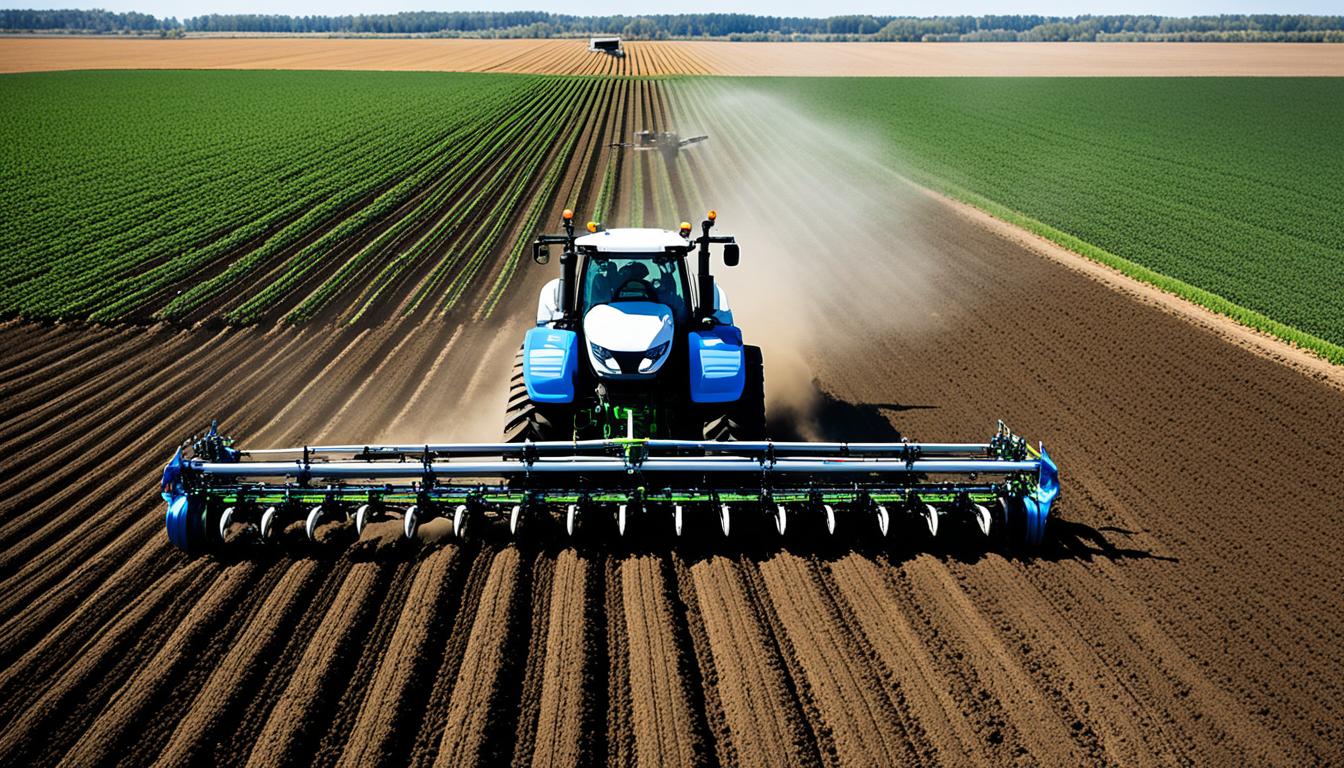
“Agriculture not only gives riches to a nation, but the only riches she can call her own.” – *Samuel Johnson*
AI is changing farming for the better. It makes work more efficient and less harmful to our planet. With AI, machines like smart cultivators can work alone, do tasks perfectly, and need no breaks. This boosts harvests and cuts down on the amount of lost crops. It also helps cut the costs of using too much pesticide or fertiliser, which is good for the environment.
Companies like FarmWise, Abundant Robotics, and Lely Industries are at the forefront. They’re making smart cultivators, apple pickers that are robots, and machines that collect animal feed with the help of AI. This new tech is changing farming in big ways. It is making weeding, harvesting, and feeding animals easier and more efficient. It’s also starting to improve other farming areas, making a promise for a stronger and greener future in farming.
Fox Robotics is a key player working on better logistics in UK fruit farms. Their Hugo RT™ Gen. II is changing things at soft fruit farms for the better. Thanks to a big grant and working with the UK’s Department for Environment, Food & Rural Affairs (Defra), they show how much new tech can improve farming. Now, the Hugo RT™ Gen. III is getting ready to lead the next farming revolution for these farms.
In India, farming is a big part of the economy and employs many people. The younger generation, including those born as recently as 2012, is ready to change Indian farming. They’re introducing new farming methods and using technology, like growing crops without soil (hydroponics), to make farming better. They want farming to be good for the environment and more connected with the world. This effort is encouraging new farming technology and a focus on ways to farm better and kinder.
The world is growing with more people and changing due to the climate. This makes it vital to improve farming. Next-gen farming gear is key, using modern tech to tackle these issues. For example, the Smart Farm Initiative at the University of California, Davis is all about using tech to produce more food and energy. It’s also working to help fight climate change.
Updating farming methods is crucial. Many people live in the countryside without access to new communication and tech. This makes farming less effective. For instance, the Hands-Free Hectare project in the UK used AI and robots to grow and harvest crops. Such steps are essential for farming to be both eco-friendly and productive.
Next-gen farm tools bring several perks, like better efficiency and eco-friendly ways to farm. Hydroponic farming, like what 80 Acres Farms does, uses almost 100% less water. Drones and AI also play a big part, making farming more predictable and earth-friendly. With the smart agriculture market growing, new devices such as the BD7410 box drill and self-driving tractors are leading a big change.
| Company | Innovation | Impact |
|---|---|---|
| Great Plains | BD7410 Box Drill | Enhanced seeding accuracy |
| Kubota | New Agri Concept Tractor | Increased farm efficiency through automation |
| 80 Acres Farms | Hydroponic farming | 97% less water usage |
In short, using advanced tech in farming ensures a bright, sustainable future. It’s changing the face of agriculture to meet today’s needs.
AI in agriculture is changing the way we farm. It’s bringing in new methods that use the latest tech. This shift is making farming more efficient and environmentally friendly.

AI cultivators lead the charge in farming advancements. Powered by machine learning and computer vision, these high-tech machines from companies like FarmWise can tell the difference between crops and weeds. This skill helps reduce the need for herbicides. It also means lower labour costs, better crop quality, and a boost in harvests.
By 2050, Earth could have 10 billion people. The world of agriculture must produce more food than ever. AI makes this possible by quickly analysing big data, guiding farmers in making better choices. It doesn’t stop there. AI-run irrigation systems help save water and nutrients by adjusting to the exact needs of crops.
AI is also changing how we care for livestock. Drones and smart machinery predict when diseases might strike or the best times for breeding. Such tools are vital for farms to be ready for the future’s food needs sustainably.
| Aspect | Impact |
|---|---|
| AI Cultivators | Increased precision, reduced labour, sustainable herbicide use |
| Predictive Analytics | Better decision-making, enhanced crop management |
| Automated Irrigation | Water conservation, efficient resource use |
| Computer Vision Models | Accurate soil monitoring, optimised nutrient application |
| AI-powered Drones & Machinery | Predictive disease tracking, optimal breeding times |
Precision agriculture tools use the latest data for smarter farming. They look closely at soil and weather to help farmers make better choices. This improves how efficiently and productively farms run.
Precision farming starts with studying soil and weather. Advanced tools process big data, helping farmers adjust in real time. For example, the Starfire™ 7000 Receiver speeds up by 73%, boosting efficiency. It also uses SF-RTK signals for field work as accurate as 2.5 cm.
Using resources wisely is key for sustainable farming. Essential tools cost $2,000 upfront plus $2,000 each yearly. Advanced tools with SF-RTK cost $4,250 a year. These investments lead to better outcomes, like the G5 series offering more screen space and faster performance.
Tools like the JDLink Modem share machine and field data in real time. This setup allows constant monitoring and improvements. It’s a big step towards using resources better and being more eco-friendly in farming.
| Tool/Feature | Benefit |
|---|---|
| Starfire™ 7000 Receiver | 73% faster pull-in times |
| SF-RTK Signal | RTK-like accuracy within 2.5 cm |
| G5 Series | 35% more screen space, 3x faster processing |
| JDLink Modem | Seamless data streaming |
By putting these tools to work, farms do more with less. This moves farming towards a smarter, greener future.
Autonomous tractors and machinery are changing farming for the better. They bring a lot of benefits. They make farming more efficient and safer. By 2026, the global market for autonomous farm gear is expected to hit $135.4 billion. This shows a big move towards automation in farming.
This new farm tech is really good at saving money and working better. John Deere has made a smart tractor that can see all around it and quickly reacts to dangers. This means farms can be safer and work better with less need for people. Even in very cold or hot weather, some machines keep working, giving farmers a reliable partner any day.
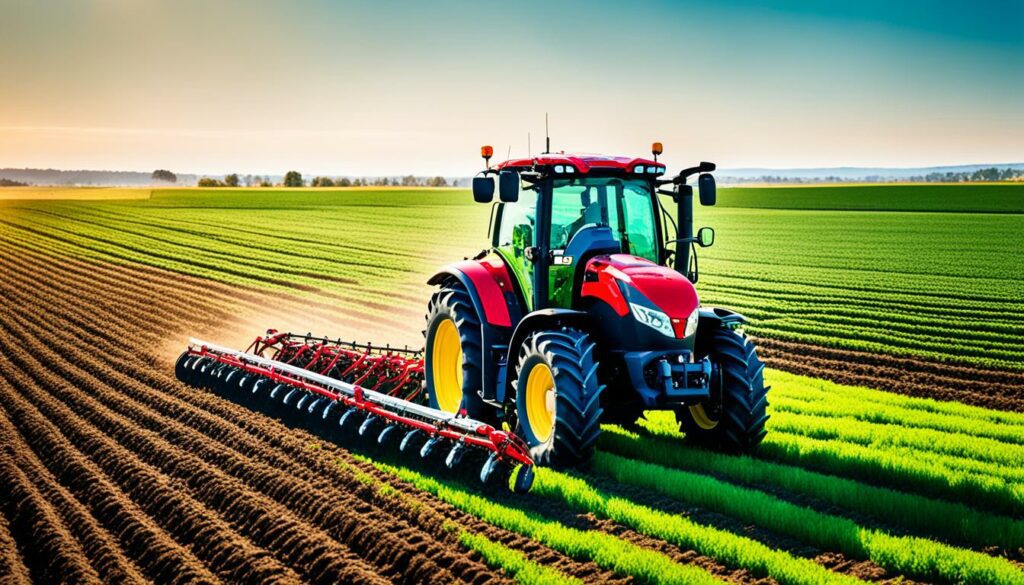
Advanced autonomous tractors are making big waves. Take the John Deere 8R 410, for example, available in different models to suit various needs. It shows how advanced we’ve become in farming tech. The New Holland T7.315 by CNH Industrial, for example, uses advanced sensors to drive on its own since 2020. Fendt’s 1000 Vario is powerful and can steer itself, proving how well autonomous tech fits into big tractors.
John Deere’s See & Spray system is a game-changer, able to focus on specific areas when spraying herbicides. This means less chemicals are needed, which is good for the environment. The Yanmar YT5115N is also exciting, as it uses cameras and sensors to drive itself, showing off how different technologies work together in tractors.
Using autonomous gear in farming has big benefits. It lets farmers do more, cuts down on chemicals, and makes farms safer and more productive. But, there are costs, including the price to get started, and farmers need to think about their setup and how to keep it safe from cyber risks.
The use of agricultural drones is changing the way we manage crops. Drones provide better crop surveillance and precision than before. This leads to more efficient and sustainable farming.
Advanced agricultural drones are becoming crucial for watching crops and spotting diseases early. They come with top-notch cameras and sensors to see things like bugs or nutrient problems fast. Using drones this way can boost crop production by 20%. For example, drones help find diseases early in grapevines, making better grapes.
One big plus of precision agriculture with drones is their accurate sprays. Normally, spraying can be wasteful and harm the environment. Drones, however, can target the exact spots that need treatment. This approach is better for the environment, saves money, and uses fewer chemicals. Plus, drones can cover more land in less time than traditional methods. This boosts efficiency and saves resources.
A table below shows how drone tech compares to the old way in managing crops:
| Feature | Traditional Methods | Drone Technology |
|---|---|---|
| Cost Efficiency | High labour and equipment costs | Reduced labour and maintenance expenses |
| Application Precision | Possible chemical drift | Directed spray minimising loss |
| Coverage Area | Limited by manual processes | Large areas covered swiftly |
| Environmental Impact | High due to overuse of chemicals | Minimal with targeted application |
The rise of drone tech is reshaping how we keep an eye on and manage crops. It’s making agriculture more sustainable and productive.
Robotic harvesters are changing the game in farming. They bring a new level of efficiency in harvesting and accuracy. These machines cut down on the need for a lot of workers, which helps when there aren’t enough people to fill farm jobs.
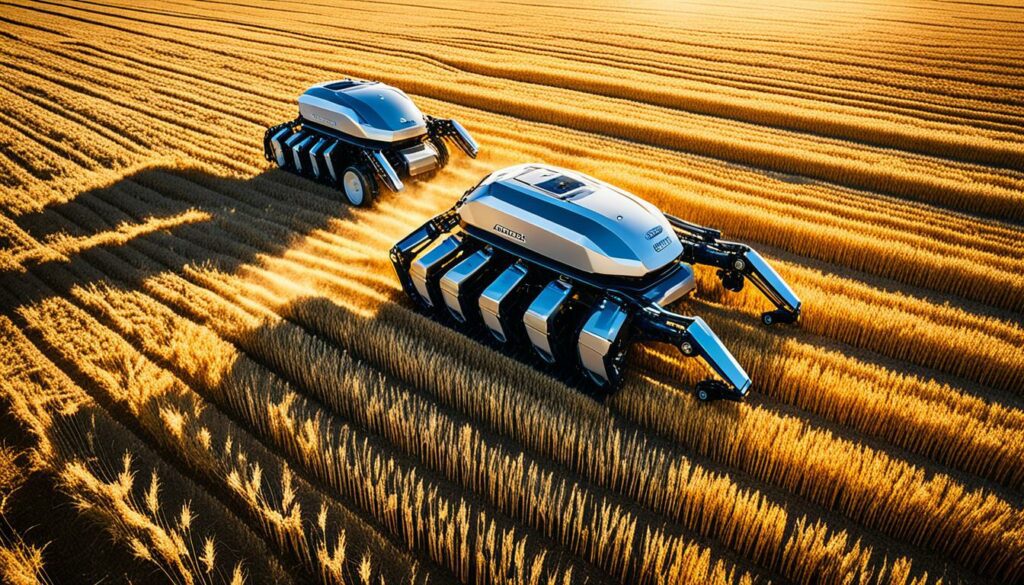
A good example is Abundant Robotics’ harvesters. They can pick apples gently, so there’s less harm to the fruit. They see the apples really well, thanks to their smart technology. This means they know the best time to pick them.
But these robots do more than just pick fruit. They can get soil ready, plant seeds, treat plants, and even pack products. This wide range of tasks boosts how much can be done and how well resources are used. It’s a big help for farmers looking to fix lots of problems around growing crops.
Expansion in this area is quick. Nearly fifty farm robots were ready to buy or almost ready as of autumn 2021. This shows how focused the industry is on getting better and being more creative.
There’s still a lot more that can be done. Experts think there will be even closer work in the future between people who understand plants and those who make robots. Together, they plan to make farming even more effective and kind to the planet.
| Aspect | Manual Harvesting | Robotic Harvesting |
|---|---|---|
| Labour Costs | High | Significantly Reduced |
| Damage to Produce | Moderate to High | Minimal |
| Efficiency in Harvesting | Variable | High |
| Scalability | Limited | High |
| Precision | Variable | High |
In closing, robotic harvesters promise a big change in farming. Farmers will have new tools to boost how much they can do and care for the environment. It’s an exciting move towards better farming for everyone.
Sustainable farming machinery is key in tackling today’s eco challenges in farming.
NEXAT’s farming equipment cuts down on harm to the environment in a big way. By using their method, the land driven on is less, from 60-80% to under 5%. This decreases soil disturbance, keeping a part of the ground untouched. This means less soil packing and crop damage from machine movement.
This leads to better land health and boosts the amount of crops grown. NEXAT’s machines also spread their weight well, which helps prevent soil from getting too tightly packed. This protects the environment and helps crops grow better.
The NEXCO harvesting machinery operates more efficiently than old combine harvesters. It increases how many crops are processed by over 50%. This shows a big step forward in farming technology. The machine can work on many field sizes, from 6 to 24 meters wide. This flexibility is great for getting more crops out of the ground without spending much extra.
Another plus is the Nexat system’s quick implement changes, done in 10 to 15 minutes. This cuts downtime and boosts efficiency. The system also makes machines lighter and more powerful, using 40% less fuel. It also reduces carbon emissions. This improves both farming costs and environmental health.
Today, advanced farming tools play a key role in our farming practices. They keep improving our farms’ work and change how we see agriculture. Yearly, we see more new tools and technologies, showing how fast this field moves forward. These changes help farms produce better.
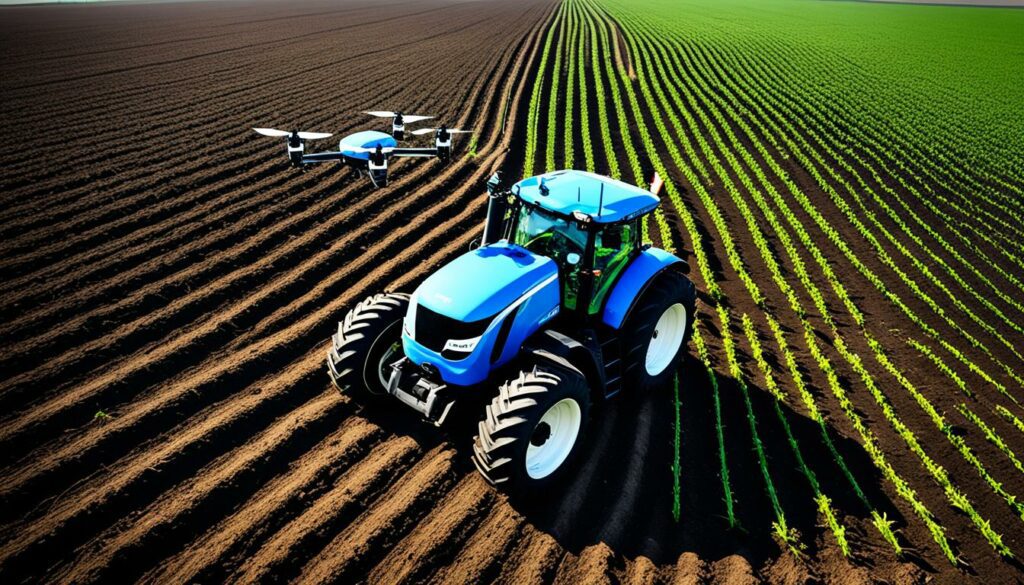
From Agriculture 3.0 to Agriculture 4.0, we see a big leap towards smart farming. This includes using drones and machines that connect to the internet. This new technology focuses on using inputs well. For example, modern agricultural technology gives us detailed maps from space. We use this to better manage our fields.
With Agriculture 5.0 or digital farming, things get even more advanced with 5G. This makes collecting data more precise and quick, which is key in smart farming. This helps with choosing which crops to grow and how to water and feed them. It makes farming more exact and efficient.
Today, farm software and high-tech tools are huge parts of successful farming. With these tools, farmers can pick from over a thousand types of small machines that fit their needs. It doesn’t matter if their farm is small, medium, or big.
Technologies like the Honda Power Weeder and the SHARACHI-8D6 9HP Diesel Power Weeder give farmers many new options. These smart farming tools save on work and boost what the farm can produce. This means more efficient farming.
High Speed ISOBUS was at a 2022 event in New Orleans and is 4,000 times quicker than before. This step makes developing more efficient agriculture software possible. This is a big step in making farming smarter.
These new tools lead to farming that’s better for the planet and earns more money. Every year, agriculture tech grows, showing how fast farming is changing for the better. This path is towards a farming that’s both eco-friendly and efficient.
Smart farming technology is changing how we look after livestock. Over the past decade, tech in this field has grown a lot. It’s making livestock management smarter and more efficient. The US market for managing livestock is worth over $30 billion each year. So, there’s a big chance to improve and grow.
AI health monitoring is a big step forward. By using AI, farmers can check on their cows from afar. They can spot any unusual behaviour early. This not only makes cows’ lives better but also boosts milk production. Making choices based on data can really help farms do better.
The EdgeFarm system by Intflow is a great example. It uses AI to keep an eye on livestock all day and night. It can watch eight different areas at once. This cuts down the cost of looking after each animal a lot. With their system, they spend way less than with other methods. They save up to 98% on costs!
Precision feeding is also a big part of smart farming. It lets farmers feed their animals exactly what they need. This is good for the animals and the farm. It saves resources and money.
Thanks to AI and big data, we understand more about what animals need. This helps in feeding animals right and predicting any health issues. In the US, only 12% of dairy farms use this technology. But this is changing. Soon, 20% of farms might use it. Investors are paying more attention to this kind of farming tech.
Using AI for health and feeding livestock marks a big change. It’s all about making farms greener and better for animals.
Modern farming devices have changed agriculture in big ways. They make farming more efficient and need less work from people.
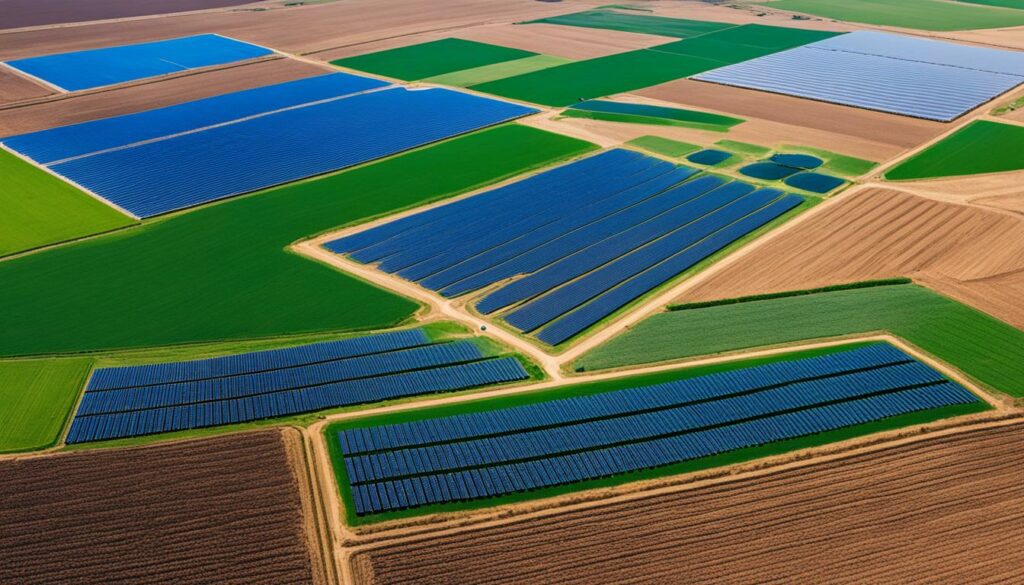
From automated milking to self-driving harvesters, farming is getting a tech makeover. This tech not only speeds up work but also makes it more precise. We’re now at Agriculture 5.0, which uses 5G to collect data fast. This helps farmers make quick, smart choices.
New farming devices cut down on manual work a lot. For example, machines and drones now do tasks that used to take many people. This means human workers can do jobs that push farming further and make it more innovative.
With less need for people to work the land, farms are producing more and better crops. This means farms earn more money and use fewer resources like water, fertilizers, and pesticides.
In a world worried about the environment, these farming gadgets are a big help. They use water and chemicals in a way that’s good for the earth, reducing pollution.
| Agriculture Evolution Stage | Technologies Introduced |
|---|---|
| Agriculture 1.0 | Invention of the plow, animal drafts |
| Agriculture 2.0 | Mechanical machinery like tractors |
| Agriculture 3.0 | Precision farming with GPS |
| Agriculture 4.0 | Autonomous machines, drones, sensors |
| Agriculture 5.0 | 5G for enhanced data collection and accuracy |
Farming innovation is no longer just for big companies. Small farms are using advanced tech to boost productivity and care for the environment. They’re using precision farming and the Internet of Things to manage crops better. This means they can use machines and smart devices to farm smarter, leading to big successes.
High-tech solutions are now affordable for small farmers. They’re using farm management software, satellite images, and smart algorithms. These help make better choices, cut waste, and grow more. This kind of farming, called Agriculture 5.0, boosts harvests with the help of 5G for faster, better data.
With these new tools, they can use just the right amount of water, fertiliser, and pest control. This saves a lot of money. Plus, small, smart tools and drones that don’t cost much are changing how farms work. This makes small farms more competitive.
There are many amazing stories of small farms using tech to succeed. Thanks to satellite tech, they can keep an eye on their fields from far away. This helps them manage their land well and act quickly when there are problems.
Smart farming tech has also upped their earnings by making better products and growing more. These success stories show that smart farming can really work. They’re leading the way in using tech to get better crops and look after the land.
| Technological Advancement | Benefits |
|---|---|
| Precision Farming (Agriculture 3.0) | Enhanced crop production input management |
| Connected Farming (Agriculture 4.0) | Optimisation of all production stages with IoT, autonomous machines |
| Digital Agriculture (Agriculture 5.0) | Maximised yields through advanced technologies and 5G connectivity |
| Farm Management Software | Competitive advantages with data-driven farming practices |
| Satellite Technology | Remote monitoring and field management |
In today’s farming, high-tech machinery is becoming more important. It isn’t just for getting more work done. It’s also making farms safer. These machines use advanced tech to help cut down on farm accidents and make farms safer places to work.
New farm safety gear is changing the game and making us safer. John Deere’s 2025 model tractors can do 100 more acres a day. They have cool safety stuff like sensors and stops that help reduce dangers.
Smart safety is big news in agriculture safety. The Case IH Quadtrac coming in June 2024 is setting new safety standards. It has a strong suspension for a smoother ride. Plus, there’s the LiDAR system in the balers, available in May 2024, that keeps an eye out for problems.
At the 2024 Electronics Show, makers like Kubota and Bobcat showed off self-driving farm gear. This tech is making farms much safer. There’s also Massey Ferguson’s system that gives farmers live safety data. It helps make choices that keep workers safer.
With so many new safety features in farm machinery in 2024, it’s clear where things are headed. By adding more safety tech, we’re doing a lot to help lower the risk of farm accidents. This makes working on farms safer for everyone.
Our world is getting ready for 10 billion people by 2050. This means we need to produce more food. Using new farming equipment is key to fighting climate change’s impact on farms.
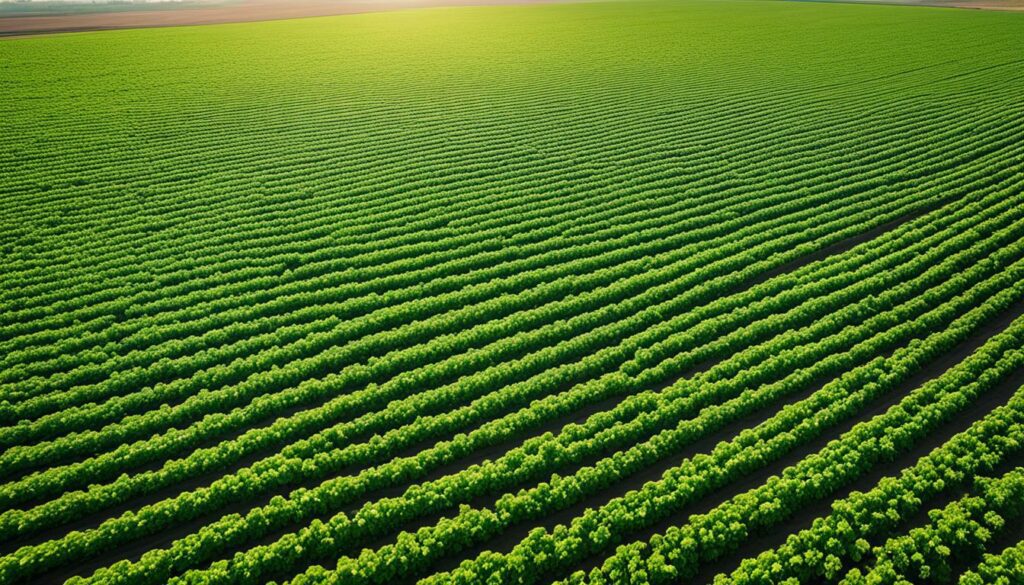
The use of artificial intelligence (AI) in farming is rapidly growing. By 2028, it’s expected to be a USD 4.7 billion market. This growth is because we need smarter tools to deal with changing weather and to make sure we can keep producing food.
Advanced farming gear, like AI and precision tech, is crucial for dealing with extreme weather. These tools can look at market needs, predict prices, and suggest the best times to plant and harvest. Farmers can then make smart choices quickly.
Driverless vehicles, drones, and AI in greenhouses are improving how we use resources. AI checks soil and crops, helping adjust nutrients and spot diseases early. This all helps lessen the blow of bad weather on crops.
Having the right tech for food security is vital. Use of AI can help find leaks in irrigation, saving water and protecting crops. Precision tech also cuts down on herbicides and makes harvests better, increasing earnings while cutting costs.
Vertical farming takes lessons from NASA and grows food in a controlled space. Plenty Unlimited uses almost no water compared to traditional farms. Yet, it still produces a lot of food. This shows how tech can help us face climate issues and keep making food sustainably.
| Benefit | Description | Examples |
|---|---|---|
| Increased Crop Yields | Using AI to enhance productivity while optimizing resource use. | Precision agriculture, AI-based predictive analytics |
| Efficiency in Resource Use | Minimising water and herbicide usage through AI tools. | IoT sensors, ML algorithms |
| Monitoring and Early Detection | Identifying pests and diseases early on for timely intervention. | Computer vision, advanced monitoring systems |
Modern farming gear is crucial for tackling climate and agricultural challenges. It ensures a strong farming system that will feed the world in the future.
In the coming years, AI will shape agriculture significantly. It will help meet the growing food demand from our increasing population. By 2050, we expect the world’s population to cross 10 billion. This will make it even more critical to produce enough food.
The AI in agriculture market is set to grow fast. It may jump from USD 1.7 billion in 2023 to USD 4.7 billion by 2028. This rise shows how much we rely on new technologies.
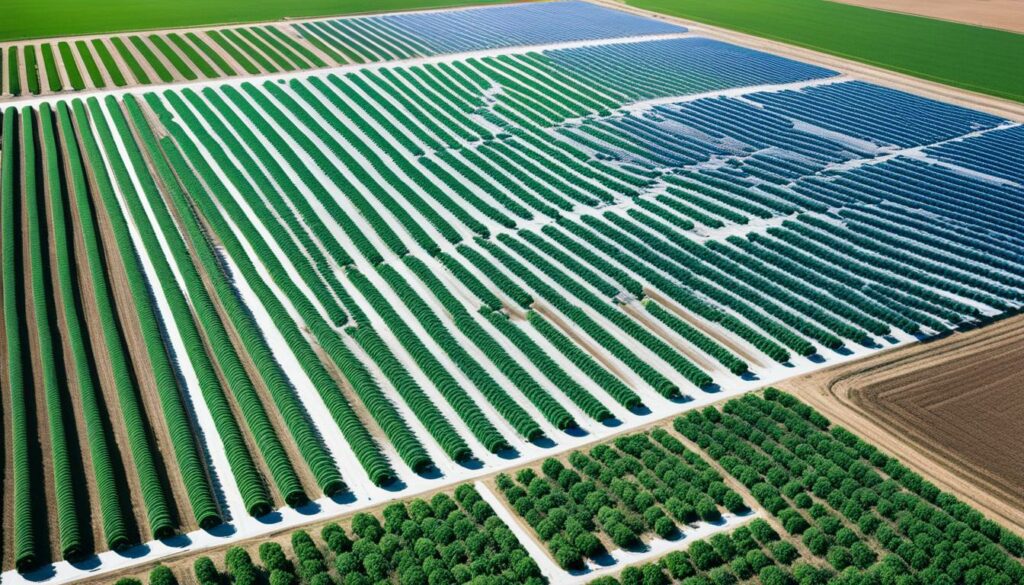
New AI tools are changing how farms work. They can process lots of data quickly. This helps farmers make better decisions. For example, they can use AI to check their crop’s health and water needs in real-time.
AI is also used to exactly spray pesticides where they’re needed. Technologies like John Deere’s See & Spray help by spotting the difference between crops and weeds. This reduces the use of harmful chemicals on farms.
But, AI in farming does face some challenges. One big issue is that not all farms can easily access these new technologies. Making sure everyone can use them is important for the future. It’s also crucial to protect the data and think about the ethics of AI in farming.
Creating strong rules and encouraging everyone to work together can help. Lastly, focusing AI in farming towards eco-friendly practices is key. For example, using AI for smarter watering can save water and make crops healthier.
| Challenges in Agricultural AI | Potential Solutions |
|---|---|
| Technological Accessibility | Collaborative innovation and equitable access initiatives |
| Data Security | Robust governance frameworks |
| Ethical Considerations | Promoting ethical AI practices and standards |
The world’s population is growing fast, expected to hit 10 billion by 2050. To feed everyone, farming must change. Next-gen farming tools make agriculture more efficient, eco-friendly, and advanced. They use AI and precision to improve crop growth and manage water and land better. This is key because we’re running out of water and losing good farming space.
AI in farming is set to grow a lot, from USD 1.7 billion in 2023 to USD 4.7 billion by 2028. This shows tech’s role in boosting farm output and saving money. With AI, farmers can swiftly analyse huge data amounts. This leads to smarter decisions and less harmful use of chemicals. So farming harms the environment less, moving us closer to sustainable farming.
In the future, farming will rely on better connections. By 2030, around 80% of rural places could have top-notch internet. This massive network could boost the world economy by over $500 billion and productivity by 7 to 9 percent. It would allow for tools like automatic machines, advanced maps from space, and AI. These will help in watering fields better, fighting pests, and checking on animals’ health. As we move towards smart farming, we’re preparing for the future while also protecting our planet.
Next-gen farming equipment includes high-tech tools like AI, precision tools, and autonomous systems. These tools aim to make farming more efficient, increase yields, and help the environment.
AI is changing farming by making it more productive and efficient while reducing harm to the planet. AI-powered machines and autonomous tools help produce more, waste less, and cut down on labour.
Companies like FarmWise and Abundant Robotics are at the forefront of these changes.
Precision agriculture tools use data to help farmers use resources better. This leads to more crops, uses less, and causes less harm to the environment. They allow farmers to make smart choices on managing their crops.
Autonomous tractors like Monarch Tractor’s MK-V are efficient and safe. They can work for longer and don’t need a driver. This way, they reduce accidents and make farming more precise.
Drones monitor crops, spot diseases early, and spray precisely. They help farmers see their fields from above and apply treatments carefully. This reduces the amount of these treatments needed, which is great for the environment.
Robotic harvesters, such as those from Abundant Robotics, pick fruits faster and with more care. They cut down on labour needs and prevent fruit damage. These are made to work with different crops, making harvesting easier.
Sustainable machinery saves water, reduces chemical use, and is more energy efficient. Technologies like smart irrigation and precision planting make farming greener. This makes farming cheaper and less harmful to the planet.
Advanced tools improve how farms work and what they produce. They help farmers make better decisions, saving time and resources. Farmers can grow more while using less, thanks to these tools.
Smart technology helps farmers look after their animals better. It spots sickness early and feeds animals more precisely. This makes caring for livestock more effective and kind, boosting farm production.
By taking over boring chores, modern devices let farmers focus on important tasks. Automated milking and harvesting machines keep farms running. This creates more opportunity for skilled work on the farm.
Small farms can benefit from technologies that are not too expensive. AI-powered tools and drones are some examples. They can help small farmers grow more and better, letting them compete with bigger farms.
High-tech tools come with safety features to keep farmers safe. Things like sensors and quick stops lessen the chance of accidents. Rules and advice also make sure that using these machines is safe.
Advanced tools, especially those using AI, can predict and tackle bad weather. They help protect crops and animals against the changing climate. This means we can keep producing food in the long run.
The future of farming with AI includes more self-driving vehicles and smart support systems. We need to deal with issues like who can use the technology and keep data safe. We must also think carefully about the moral side of these changes to make the best out of AI in farming.